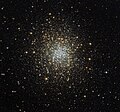ملف:Palomar 2 Hubble.jpg
المظهر

حجم هذه المعاينة: 643 × 599 بكسل. الأبعاد الأخرى: 257 × 240 بكسل | 515 × 480 بكسل | 824 × 768 بكسل | 1٬098 × 1٬024 بكسل | 2٬197 × 2٬048 بكسل | 4٬146 × 3٬865 بكسل.
الملف الأصلي (4٬146 × 3٬865 بكسل حجم الملف: 10٫9 ميجابايت، نوع MIME: image/jpeg)
تاريخ الملف
اضغط على زمن/تاريخ لرؤية الملف كما بدا في هذا الزمن.
| زمن/تاريخ | صورة مصغرة | الأبعاد | مستخدم | تعليق | |
|---|---|---|---|---|---|
| حالي | 08:38، 17 أبريل 2013 |  | 4٬146 × 3٬865 (10٫9 ميجابايت) | Fabian RRRR | {{Information |Description='''Palomar 2 - A unique cluster: one of the hidden 15''' Globular clusters are relatively common in our sky, and generally look similar. However, this image, taken using the NASA/ESA Hubble Space Telescope, shows a unique ex... |
استخدام الملف
الصفحة التالية تستخدم هذا الملف:
الاستخدام العالمي للملف
الويكيات الأخرى التالية تستخدم هذا الملف:
- الاستخدام في ckb.wikipedia.org
- الاستخدام في cs.wikipedia.org
- الاستخدام في de.wikipedia.org
- الاستخدام في el.wikipedia.org
- الاستخدام في en.wikipedia.org
- الاستخدام في fr.wikipedia.org
- الاستخدام في lb.wikipedia.org
- الاستخدام في pl.wikipedia.org
- الاستخدام في pt.wikipedia.org
- الاستخدام في ru.wikipedia.org
- الاستخدام في sv.wikipedia.org
- الاستخدام في tr.wikipedia.org
- الاستخدام في www.wikidata.org

